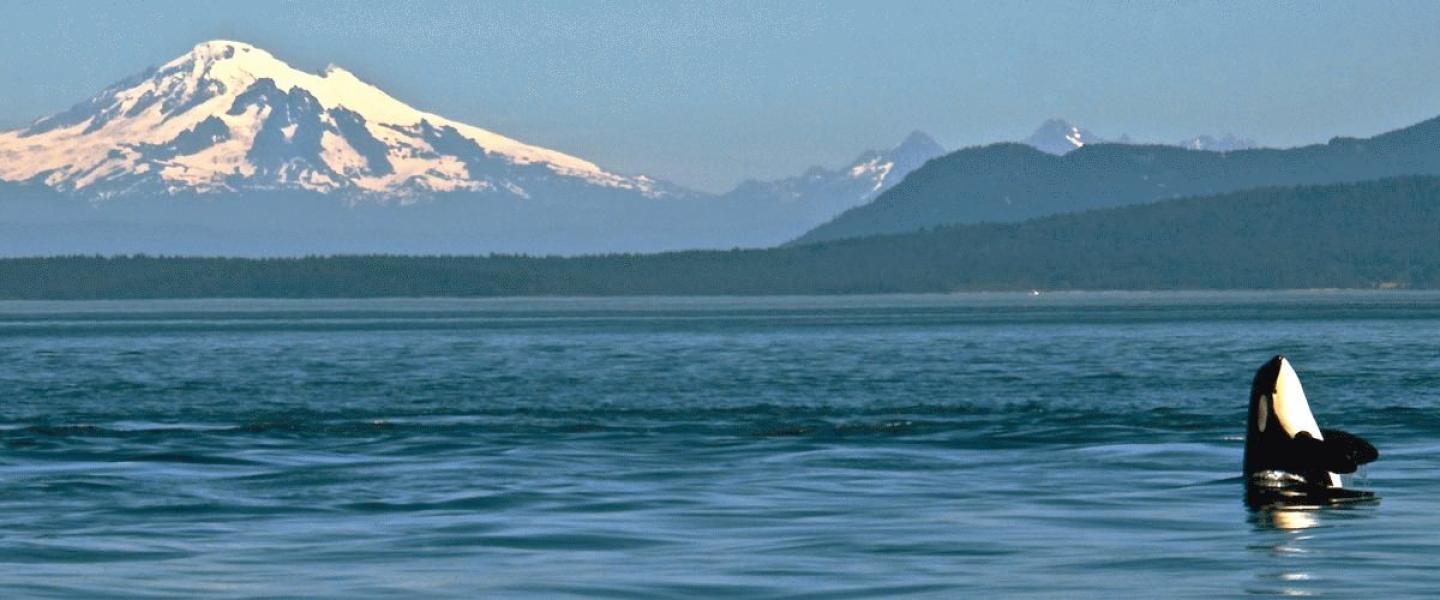
Kelly | M/V Kestrel | 8/12/22 | 10:00am
Captain Eric and I were thrilled to leave the harbor on this beautiful Friday morning. A Humpback whale had been reported right outside Friday Harbor! After quickly suiting our guests up, we briefed everyone on safety precautions and gave them a quick wildlife summary before heading out into the channel.
The initial humpback report was based on a shore sighting and no boats on the water had yet reported the whale’s location. This means we were still very much in search mode. We quickly transited north up San Juan Channel, scanning the entire time. We stopped at the very start of Griffin Bay, shut the engine off, and encouraged guests to keep their heads on a swivel and help scan the area. According to the earlier report and direction of travel, the whale should’ve been close by. We kept our eyes on clusters of sea birds. A wide variety of gulls, rhinoceros auklets and common murres congregated together can be indicative of a bait ball or large dense gathering of small schooling fish. These small fish species make up the main diet of our humpback whales, so they’re great starting points when searching. After scanning for a solid twenty minutes, we heard a blow…it was most definitely the distinctive exhalation from a cetacean nearby! Excited, we slowly puttered in the direction of the sound. Then a report came in over the radio, a fellow whale watch boat had confirmed the whale’s location, just south of us right in Cattle Pass. The report not only confirmed the animal’s location, but also the species. To our surprise, this whale was not a humpback, but a grey whale!! This was a huge shock to us as grey whales are quite the rare sight this time of year. These ancient cetaceans are a more common sight during spring and fall. We immediately traveled to the whale’s location and watched as the animal surfaced off the starboard side of our small inflatable vessel. After a few quick breaths, the whales threw its tail up in the air and “fluked”. Another shocker! Gray whales are not at all known for this behavior. In total, the animal fluked 3 times during our visit. At one point surprising us by surfacing about 100 yards off out starboard side! Giving us some great looks at that dappled grey skin coloring. The whale was moving quickly west, so after those incredible looks we changed course and moved on to search for other wildlife.
We quickly found ourselves at Salmon Bank, a very shallow area of water just offshore from the south side of San Juan. This area is known as a minke whale hotspot. These smaller baleen whales favor this area because of its small schooling fish abundance. Not long after stopping to scan the area, a “slinky” Minke surfaced off our bow about 400 yards out. We moved within about 200 yards of where the animal last surfaced, always sure to place our boat parallel to direction it was traveling. To our amazement, the minke surfaced multiple times directly parallel to us just under 100 yards off our port! It truly felt like the cetacean was following our vessel! Although Minke whales are among the smallest baleen whales, the animal felt overwhelmingly large next to our small inflatable vessel.
What an eventful tour filled with so many rare encounters! Thanks to everyone who joined us on the adventure tour with San Juan Safaris.